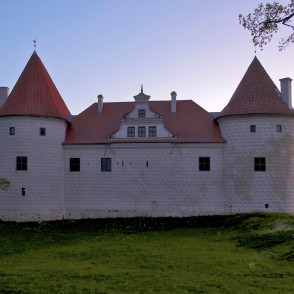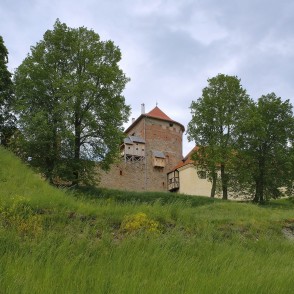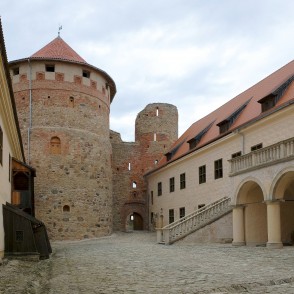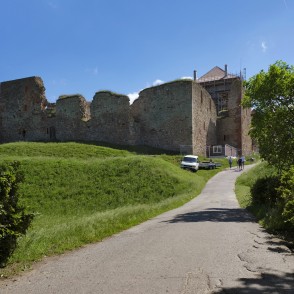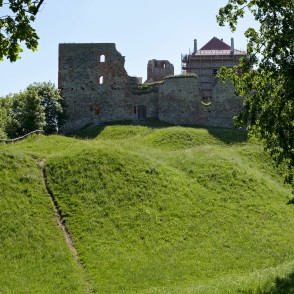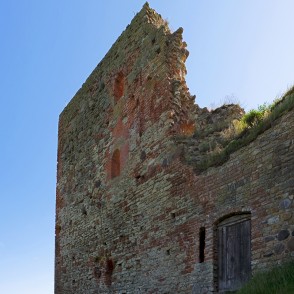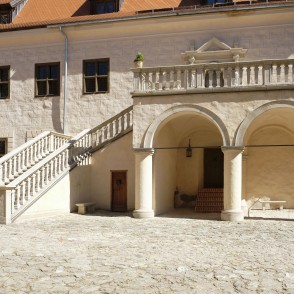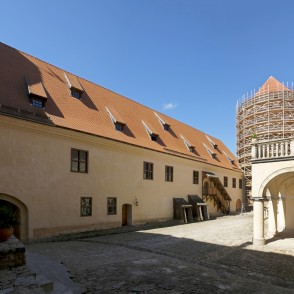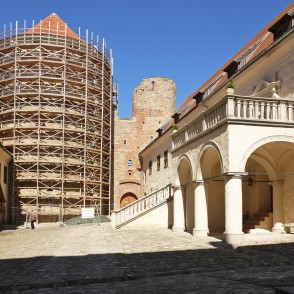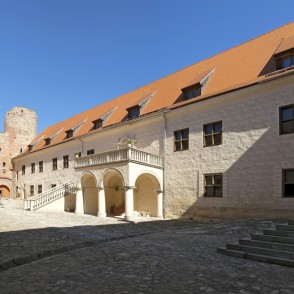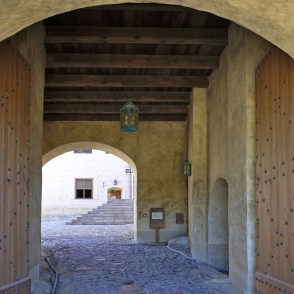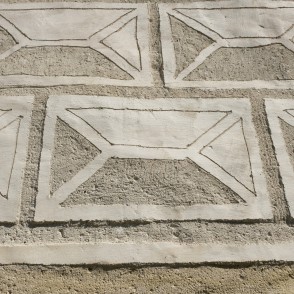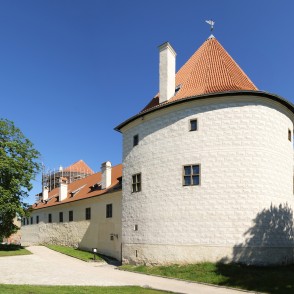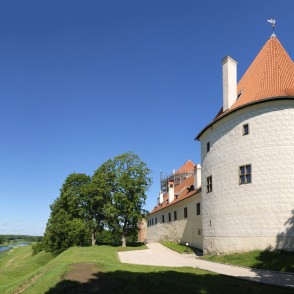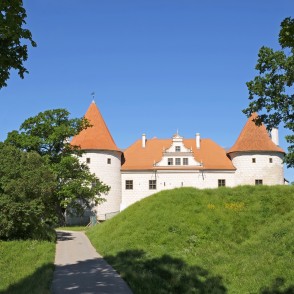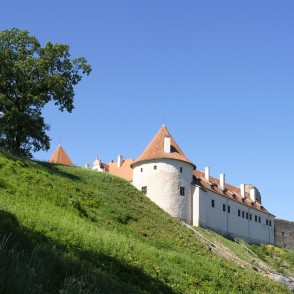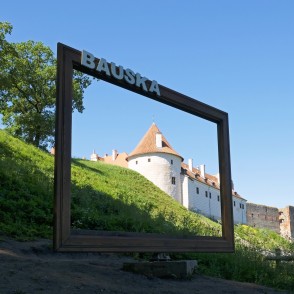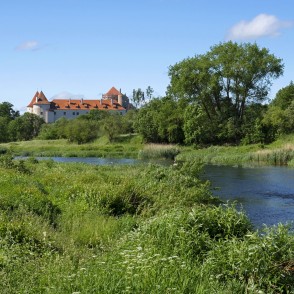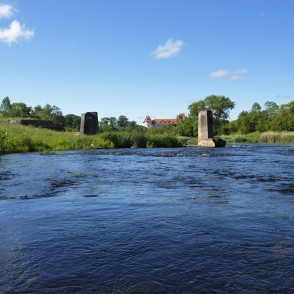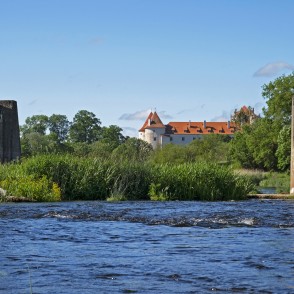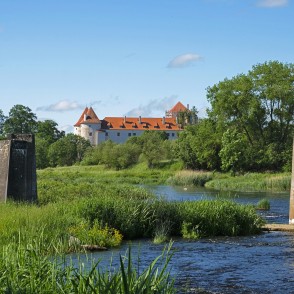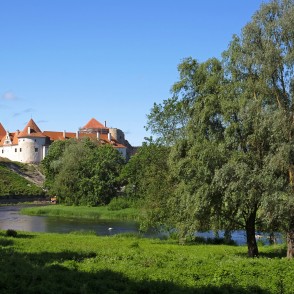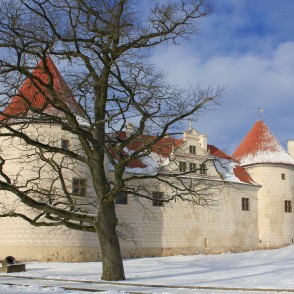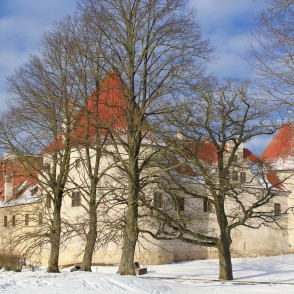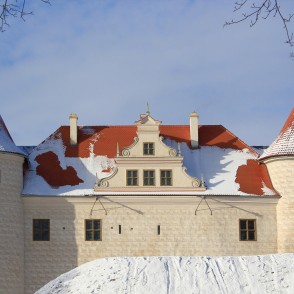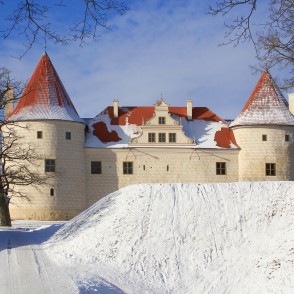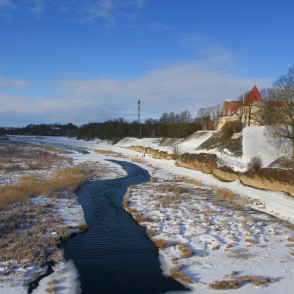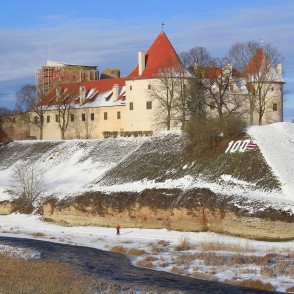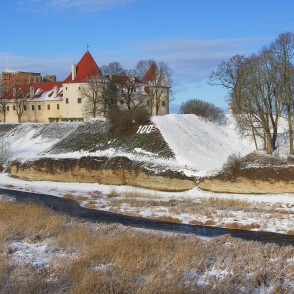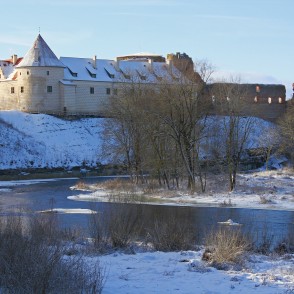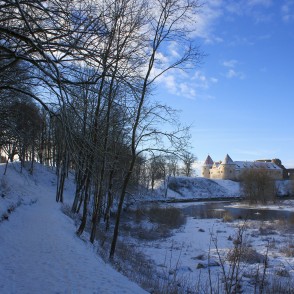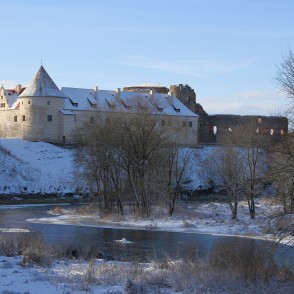The castle surrounded by a picturesque scenery is located in the territory of Bauska town, on the land strip between the rivers Mūsa and Mēmele, not far from the place where the rivers meet to form the river Lielupe. The Bauska castle complex consists of two parts. The oldest of them – Livonia Order Castle – was built in the middle of the 15th century, but only ruins have remained up to nowadays. While the newest – residence for the Duke of Kurzeme (Courland) – was built at the end of the 16th century.
The Bauska Castle represents an example of military architecture in the period from 15th to 17th century. Its oldest part is the only Livonian Order fortress built especially for the use of firearms, but the newest part – a residential castle fortified with bastions, protective walls and earthen ramparts.
The building is the only partially preserved residence of Dukes of Kurzeme (Courland) and Zemgale (Semigallia), the Kettlers, as well as the only architectural monument in Latvia illustrating the expressions in art of Mannerism castle architecture and applied and decorative art in the Duchy of Courland.
In the seventies of the 20th century, restoration of the castle’s newest part began to include the historical, archaeological and architectural monument of national importance among tourism-oriented places, to organise thematic exhibitions dedicated to the Bauska Castle in the historical context of Livonia and the Duchy of Courland.
The conservation of ruins of the Order Castle commenced at the end of nineties to preserve their informative value and romantic appearance in the scenery, to slow down deterioration of its structures and make the ruins safe for visitors.
The architectural monument is managed by the Bauska Castle Museum. It organises the studies, preservation and restoration of the historical building, maintains the castle’s image and ensures the visiting possibilities for tourists.
Those who are interested can look at the ruins of the Order Castle, climb the central tower, view the panorama of Bauska, and see the outline of the previous fortification system consisting of bastions and ramparts. The Duke’s residence hosts the regular exhibition of the museum and other thematic exhibitions.
After visiting the castle tourists can reach the Ķirbaksala by taking the pedestrian path leading through the park of the castle mound, across the meadow and bridge over the channel and see the source of the river Lielupe.
“... Heidenreich Vinke von Overberg who led two heavy battles against Russians and destroyed their land became the Master of the Livonian Order. He ruled almost 14 years and built the Bauska Castle.”
Balthasar Russow’s Livonian Chronicle – Barta, 1584.
bauskaspils.lv
Bauska Castle (Latvian: Bauskas pils; German: Schloss Bauske) is a complex consisting of the ruins of an earlier castle and a later palace on the outskirts of the Latvian city of Bauska.
History
The castle, the remains of which were recently restored, stands on the narrow peninsula at the confluence of the rivers Mūša and Mēmele where they form the Lielupe river. In ancient times, the hill was the site of an ancient Semigallian fortress. The first stone buildings were established between 1443 and 1450 by the Livonian branch of the Teutonic Knights and construction continued till the end of the 16th century. The old section of the castle featured a great watch tower, 3.5 meter thick walls, a prison under the tower, a garrison and a drawbridge at the gates.
Construction started under the rule of the Master of the Livonian Order, Heidenreich Vinke von Overberg (1439 – 1450). The castle was intended to strengthen the Order's power over Semigallia, to protect the border with the Grand Duchy of Lithuania and to control the trade route from Lithuania to Riga. The castle was both the military stronghold and the administrative centre of the area.
After the collapse of the Livonian Order in 1562, Bauska Castle became one of the residences of the Dukes of Courland, for whom a new adjacent wing was built in the 17th century. In 1568, 1590 and 1601 the Landtags of Duchy of Courland and Semigallia were held here.
In 1706, during the Great Northern War, both castle and palace were blown up by the retreating Russians and left unrestored.
Today
Only ruins remain from the seat of the Livonian order. The palace, however, is fully restored and can be visited daily during the summer months. Visitors can explore the castle, visit the museum, eat in the café and climb the castle keep lookout tower, which has a panoramic view of the surrounding city and countryside.
en.wikipedia.org

